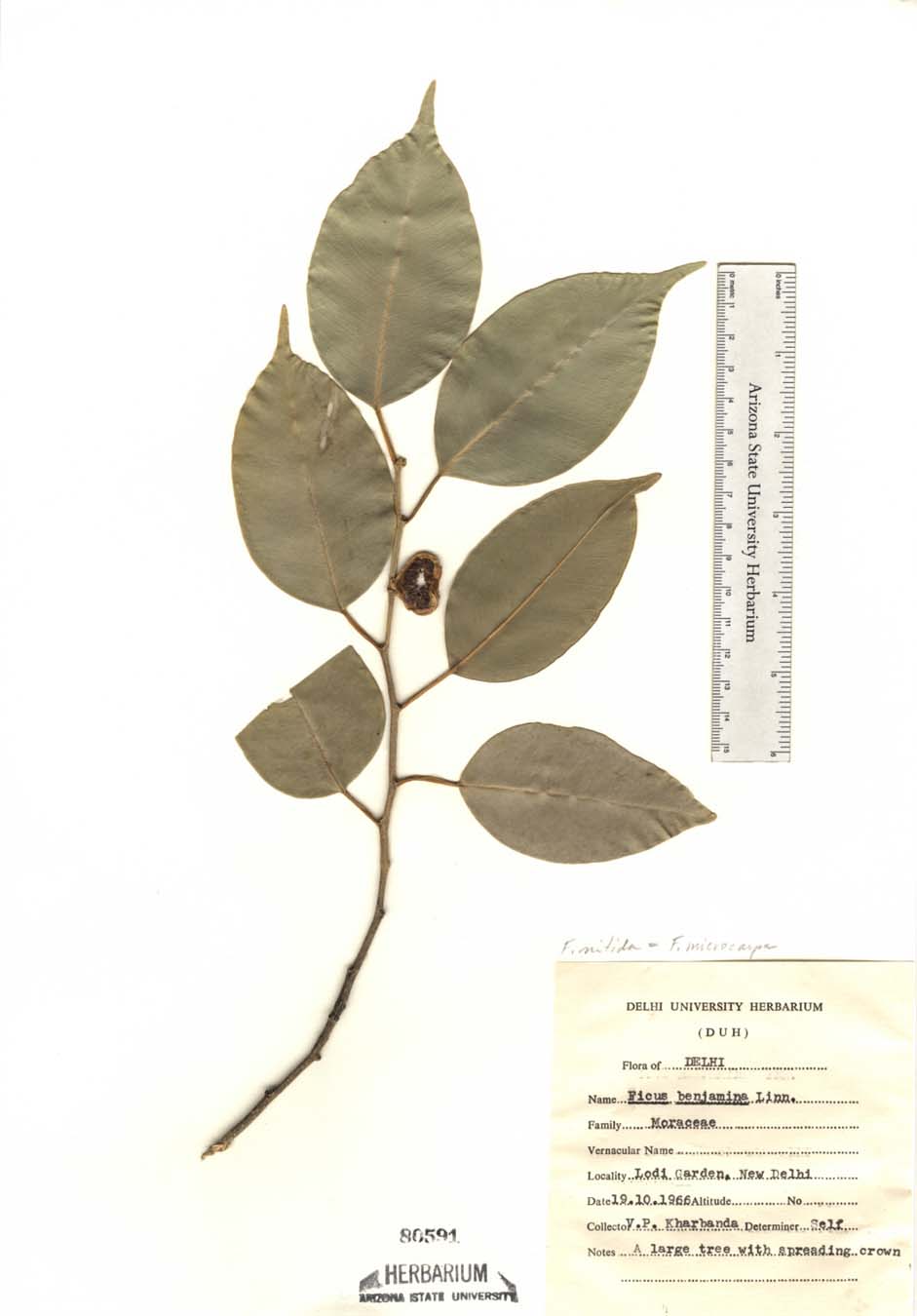|
Family: Moraceae |
Trees, shrubs, or woody vines , evergreen or deciduous, commonly epiphytic or scandent as seedlings; sap milky. Terminal buds surrounded by pair of stipules. Leaves alternate, monomorphic (dimorphic in F . pumila ); stipules caducous, fused, enclosing naked buds. Leaf blade: margins entire (lobed in F . carica ), rarely dentate; venation pinnate or nearly palmate. Inflorescences small, borne on inner walls of fruitlike and fleshy receptacle (syconium). Flowers: staminate and pistillate on same plant. Staminate flowers sessile or pedicellate; calyx of 2-6 sepals; stamens 1-2, straight. Pistillate flowers sessile; ovary 1-locular; style unbranched, lateral. Syconia globose to pyriform; achenes completely embedded in enlarged, fleshy, common receptacle and accessible by apical opening (ostiole) closed by small scales. x = 13. Worldwide, Ficus is one of the largest genera of flowering plants. Members of the genus are usually treated as a separate tribe within Moraceae because of their unique inflorescence and wasp-dependent system of pollination. The floral characters (especially of the American species, which are quite uniform) are exceedingly difficult to use or of little value in distinguishing species. Therefore they are not used in the species descriptions. The form of the syconium, however, is often significant and taxonomically useful. Ficus pseudocarica Miquel was cited by P. A. Munz (1974) as an occasional escape in the Santa Barbara region. It is not cited by other workers, and I have seen no specimens. Ficus rubiginosa Desfontaines ex Ventenat cultivar `Florida', a species native to Australia, has recently been reported as naturalized in the Los Angeles area (Michael O'Brien, pers. comm.). It is a small tree with rusty-pubescent branchlets, petiole, and abaxial leaf surfaces; ovate to elliptic-oblong, leathery, 10-cm leaves; and paired axillary, globose, warty, rusty-pubescent syconia 1 cm in diameter. Vernacular names include Port Jackson fig, rusty fig, and littleleaf fig.
|


